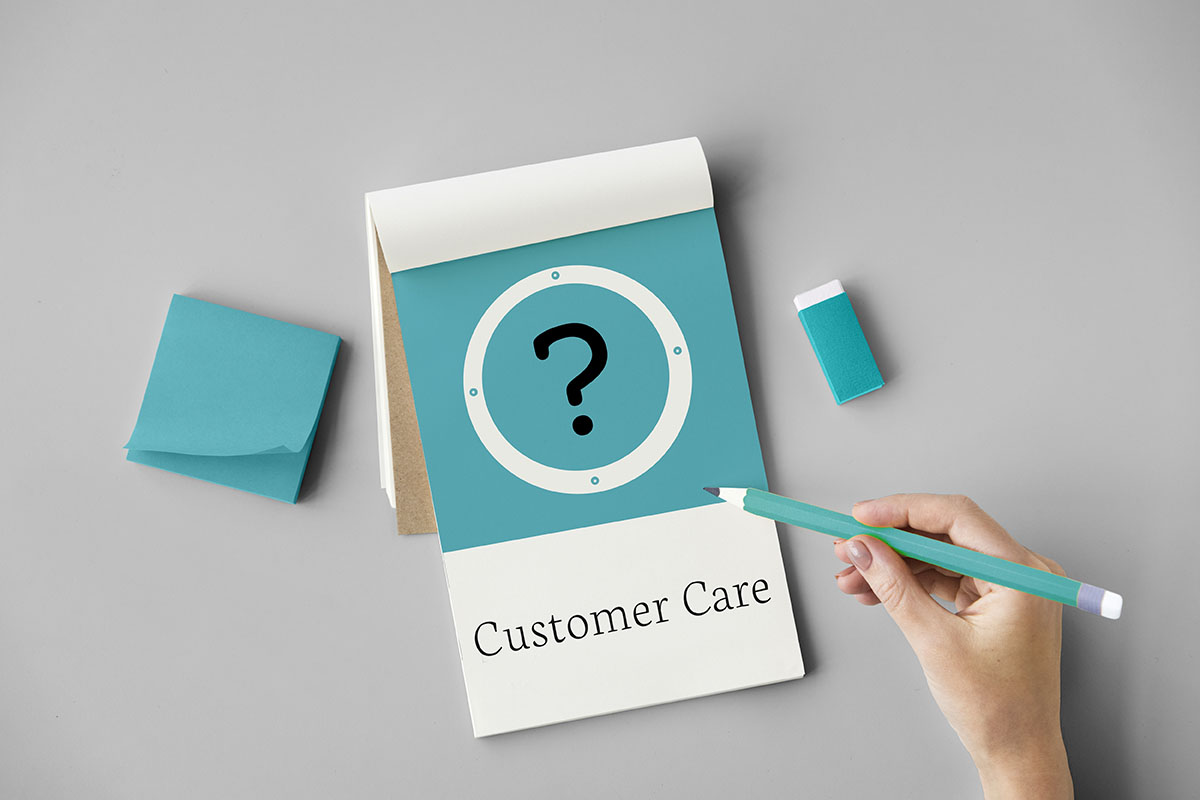If you’re a business owner, you know that customer satisfaction surveys are important. In fact, they may be the most important thing that you can do to increase sales and keep your customers happy.
This is because CSAT surveys help you identify problems with your business and fix them before they become bigger issues.
Here, we will discuss the importance of customer satisfaction feedback and how it can help your business grow!
Why customer satisfaction surveys are so important?
A customer satisfaction (CSAT) survey is important to companies because it can help them understand how their customers feel about the products and services they offer.
This data can be used to improve the quality of the products and services, which will make customers happier and more likely to return.
Surveys are also an effective way to determine customer needs and preferences, which is critical for companies that want to stay ahead of the competition.
Let’s explore some of the reasons why CSAT surveys are important.
1. Understand What Your Customers Want
When it comes to understanding what customers want, customer satisfaction surveys are one of the most important tools that businesses can use, as CSAT surveys give businesses a clear picture of what customers like and don’t like about their products and services.
With this information, businesses can make changes to their products and services that will make customers happier and more likely to return. In addition, surveys can also help businesses understand customer needs and preferences, which is critical for staying ahead of the competition.
If you want to ensure that your business is providing the best possible products and services to your customers, then you need to make sure that you’re using a customer satisfaction survey. By doing so, you can identify problems early on and make the necessary changes to keep your customers happy. In the end, this will lead to increased sales and a loyal customer base.
2. Identify Problem Areas and Take Action
One of the main benefits of a customer satisfaction survey is that it can help you identify problem areas in your business. This is important because it allows you to take action before these problems become bigger issues.
When you’re aware of a problem, you can address it head-on and fix it before it causes any long-term damage. This is crucial for businesses that want to maintain a good reputation.
In addition, taking action based on customer feedback shows your customers that you’re committed to their satisfaction. This can go a long way in building loyalty and keeping your customers coming back.
3. Build Better Relationships With Customers
CSAT surveys are important because they help businesses build better relationships with their customers. When businesses are able to identify and fix problems early on, it shows their customers that they care about their satisfaction.
This can go a long way in building loyalty and keeping customers coming back.
In addition, a customer satisfaction survey can help businesses understand what their customers want and need. This is critical for businesses that want to beat the competition.
4. Understand How Well You’re Doing
Customer satisfaction surveys are a great way to measure how well your business is doing. This is because they give you a clear picture of what customers like and don’t like about your products and services.
With this information, you can make changes to your products and services that will make customers happier and more likely to return. In addition, customer satisfaction surveys can also help you understand customer needs and preferences, which is critical for staying ahead of the competition.
5. Encourage Customer Loyalty
Customer feedback plays a key role in encouraging customer loyalty. If you pay attention to current needs and concerns of your customers, they are going to sense your sincerity and become loyal to your business. This will lead to long-lasting customer loyalty.
A customer satisfaction survey can also help businesses understand what their customers want and need. This is critical for businesses that want to stay ahead of the competition.
By understanding customer needs and preferences, businesses can make changes to their products and services that will keep customers coming back.
6. Get a competitive advantage
In today’s competitive marketplace, customer satisfaction surveys are more important than ever. By measuring customer satisfaction, companies can identify areas where they need to make improvements and ensure that they are providing the best possible customer experience.
Satisfied customers are more likely to return and recommend your business to others, so it’s important to make sure that you are doing everything you can to keep them happy.
7. Identify new opportunities
Customer satisfaction surveys can also help you identify new opportunities for growth. If you notice that a particular product or service is popular among your customers, you may want to consider expanding your offering in that area.
Surveys can also help you track changes in customer sentiment over time, so you can identify any potential problems before they become too serious.
8. Increase Your overall profits
Increasing your customer satisfaction score can be an effective way to increase profits for businesses. They can help identify customer needs and provide feedback on how the customer experience can be improved.
Surveys can also provide a valuable source of information for product development and marketing decisions. By understanding the needs of customers, businesses can create products and services that meet customers’ expectations and increase profits.
Ultimately, these surveys provide valuable feedback that can help businesses improve their products and services and boost their bottom line.

How do I run a CSAT survey?
If you want to start creating your CSAT survey in seconds then sign up today for a free. You’ll love our CSAT surveys! Also, you can create as many more survey types, including Net Promoter Score (NPS) and Customer Effort Score (CES) surveys.
A CSAT survey is a great way to identify potentially loyal customers and identify potential areas for improvement. Here are the basic steps to running a CSAT survey.
1. Choose the right tool
There are a number of different tools available for running CSAT surveys, including our own JustFeedback. But there’s also SurveyMonkey, Qualtrics, and Google Forms. Choose the tool that best meets your needs.
2. Create your survey questionnaire
This will vary depending on the tool you choose but typically includes questions about overall satisfaction, product features, and customer support.
3. Send out your survey
Once your questionnaire is complete, send it out to your customers via email or through your website. Always try and give your customers the option to give feedback wherever they feel most comfortable.
4. Analyze the results
Once your survey is complete, analyze the results to see where you need to make improvements. The process should be iterative, and we’d recommend you continually monitor to ensure you’re never slipping.
What are different types of customer satisfaction surveys?
There are a variety of customer feedback surveys that businesses use to measure customer sentiment. The most common type is the Net Promoter Score (NPS) survey, which asks customers how likely they are to recommend the business to others.
Other types of customer satisfaction survey examples include:
- Customer Effort Score (CES) surveys ask customers how much effort they had to put in to get what they wanted from the company.
- Voice of the Customer (VoC) surveys collect feedback on all aspects of the customer experience, from product quality to interactions with customer service representatives.
- Customer Satisfaction Index (CSI) surveys ask customers to rate their satisfaction with specific elements of their purchase or experience.
The above are just a small number of examples. But remember, whichever one you choose, pick the right survey questions when gathering feedback.
1. Choose the right survey for you
The right customer satisfaction survey questions vary depending on the customer insights you want. Some are short and sweet, and others are lengthy and involved. However, every piece of customer feedback survey has one common goal – to measure customer satisfaction levels.
When you’re creating a survey template, keep the respondent in mind. Send surveys on time, especially to new customers, to maximize your survey response rates.
Whichever approach you take, be sure to pick one which encourages a high rate of survey respondents.
2. Quantitative vs qualitative
There are two main types of customer satisfaction surveys – quantitative and qualitative.
- Quantitative surveys use questions that can be answered with a number, such as “How satisfied are you with your purchase?”
- Qualitative surveys use open-ended questions that ask respondents to provide a written answer, such as “What did you like best about your experience?”
There are also several different types of quantitative customer satisfaction surveys. The most common type is the Likert scale survey, which uses a five-point scale to collect customer satisfaction data.
Another big distinction between quantitative and quantitative surveys is that quantitative surveys often include multiple-choice survey questions, which ask customers to choose from a list of possible answers.
3. What is the Likert scale?
Likert scale questions allow researchers to measure the strength of people’s opinions on different topics. It typically consists of a series of statements, and participants are asked to indicate how much they agree or disagree with each statement.
- This type of scale is often used in surveys and polls, and it can provide researchers with valuable information about people’s attitudes and beliefs.
- Typically, when using a Likert scale question, respondents are asked to indicate their level of agreement or disagreement with a statement on a five-point scale, from strongly disagree to strongly agree.
When asking an agree/disagree type of question, it’s easier to get specific information about how people feel about a topic very quickly. The results can be used to create graphs that show the distribution of opinions on a subject.
What should a customer satisfaction survey include?
When designing your own survey, try and use the same survey for the same customer so your market research is effective; it’s important to keep in mind what information you hope to collect accurate feedback data.
In general, surveys should include questions about the customer’s overall experience with your company, as well as their perceptions of specific aspects of the experience.
Here’s a quick rundown of the things you consider including in your customer surveys.
- How was the customer’s experience?
- Does the customer need any additional customer support?
- Was the customer happy with their purchase?
- Would the customer recommend the product or service to a friend?
- Did the customer feel like they received good value for their money?
- Would the customer buy this product or service again?
Tip: When creating any type of customer experience surveys, pick a single survey template and ensure it’s sent to the same customers.

The benefits of conducting customer satisfaction surveys
1. Identify areas of improvement
Customer satisfaction surveys can be an effective way to identify areas for improvement in a business. By understanding what customers want and how they feel, businesses can make changes that will improve their customer journey.
Surveys can be used to gather feedback on a variety of issues, such as the quality of service or the products offered. By monitoring customer satisfaction over time, businesses can ensure that their needs are being met and that they are improving their overall reputation.
2. Gauge customer satisfaction
A customer satisfaction survey is one way to gauge how customers are feeling and whether they’re satisfied with the product or service. Customer satisfaction surveys can help identify areas in which a company could improve so that it can better serve its customers.
Surveys can also be used to measure loyalty among your customers, which is an important factor for businesses.
Tip: Send surveys after a customer’s initial purchase so you can gauge customer happiness early on in your customer lifecycle.
3. Improve your business with customer feedback
Feedback, especially early in a customer journey, can help improve a business in a number of ways. First, surveys can help identify areas where customers feel they are not being treated fairly or where they feel that the quality of service provided is not up to par.
By addressing these concerns early on in the customer journey, businesses can avoid potential customer dissatisfaction and loss of revenue.
Additionally, surveys can provide an accurate snapshot of customer sentiment at any given time, which can be valuable information for marketing decision-making and product development.
4. Get to know your customers
Customer feedback is great for getting to know your users better. They can help you to understand what your customers want and need and how you can improve your services. Surveys can also be used to measure the effectiveness of your marketing campaigns.
5. Identify problem areas
Problem areas in businesses can often be identified by running a customer satisfaction survey. The surveys can help identify issues and then take steps to improve the customer experience.
Survey results can be used to measure customer satisfaction over time and also help identify customer trends.
By using a customer satisfaction survey, businesses can improve their problem areas and create a better overall customer experience.
6. Improve customer service
Customer satisfaction surveys can be used as a way to improve your customer service team. They can help identify areas of improvement and help managers better understand the needs and wants of their customers. Surveys can also be used to plan future customer service improvements.
7. Increase customer loyalty
Use customer satisfaction surveys to measure loyalty; surveys can be a powerful tool. A recent study by Emerald compared the results of customer surveys and focus groups when it came to increasing brand loyalty. In general, surveys showed a greater impact on brand loyalty than focus groups.
However, there are certain types of customer survey that are more effective than others.
How to improve your customer satisfaction score
Now that you know what a customer satisfaction survey is and why you should use them let’s take a look at some things you can do to keep your customer satisfied and steps to take to improve things if you need to.
1. Follow Up After a Sale
When it comes to customer satisfaction, following up after a sale is key. After you have made a sale, be sure to follow up with the customer and ensure that they are happy with their purchase. If there are any problems, be sure to address them immediately.
Following up after a sale is a great way to show your customers that you care about their satisfaction and that you are willing to go the extra mile to ensure that they are happy.
2. Make it Easy to Contact You
Customers should never have a difficult time contacting you. Ensure that your contact information is easy to find and that you have multiple channels for customer support.
This will show your customers that you are accessible and that you are willing to help them with any problems they may have, leading to happy customers all around!
3. Respond to Complaints Quickly
When a customer makes a complaint, be sure to respond quickly. Address the problem and take steps to resolve it as soon as possible. Customers will appreciate your quick response and will be more likely to do business with you in the future.
By responding quickly to complaints, you can show your customers that you care about their satisfaction and that you are committed to resolving any problems they may have.
4. Train Your Staff Well
Your staff is one of the most important aspects of your business. They are the ones who interact with your customers and provide them with the customer experience. If your staff is not well trained, it can reflect badly on your business and lead to customer dissatisfaction.
Customer service should be one of the most important aspects of their training. They should know how to handle customers and how to resolve any problems they may have.
If your staff are not properly trained in customer service, it can lead to customer dissatisfaction and a negative experience for your customers.
5. Offer Good Customer Service
One of the best ways to ensure high customer and client retention is to offer good customer service. This means providing quality customer service that meets or exceeds the expectations of your customers.
Your staff should be well trained in customer service and be able to handle any problems that may arise. They should also be friendly and helpful and be able to resolve any issues that your customers may have.
If you offer good customer service, it will show your customers that you care about their satisfaction and that you are committed to providing them with the best possible experience. This can lead to increased long-term customer loyalty and more repeat business.
6. Keep Your Prices Reasonable
Price is one of the most important factors consumers consider when making a purchase. If prices are too high, customers may be discouraged from making a purchase. Conversely, if prices are too low, customers may feel that they are not getting their money’s worth.
Keeping prices reasonable ensures that customers remain satisfied with your products and services. There are several ways to maintain a high level of customer satisfaction without sacrificing profits.
7. Listen to What Customers Want
Listen to what customers want is one of the most important things a business can do to maintain high levels of customer satisfaction. Businesses that listen to their customers and understand what they want are more likely to be successful.
Not only will this lead to happier customers, but it can also lead to increased sales and better customer retention.
8. Thank Customers for Their Loyalty
Loyalty is key to maintaining high levels of customer satisfaction. A business that thanks its customers for their loyalty can create a strong bond with those customers and ensure that they continue to be satisfied with their experiences.
Thanking customers for their loyalty can also create goodwill that can lead to repeat business, helping businesses achieve their marketing and financial goals.
Different ways a survey can be carried out
Whichever survey type you use, it’s important to choose the most appropriate customer satisfaction survey questions for your needs. Whichever method you use, be sure to use survey questions that allow for effective market research and can help close your feedback loop.
1. Online Surveys
An online survey is a great way to gather data from a large number of people in a short amount of time. They have several advantages over traditional surveys, such as the ability to reach a larger audience and the use of online questionnaires, making it easier for respondents to participate.
However, online surveys have some limitations that should be considered before using them. First, they can be less accurate than traditional surveys because they do not allow respondents to provide feedback in a private setting.
2. Telephone Surveys
Telephone surveys are one of the most common types of surveys. They are conducted by phone and are used to collect information from a sample of people. Telephone surveys allow businesses to reach a large number of people in a short amount of time. They are also relatively cheap to conduct, which makes them an attractive option for businesses.
However, telephone surveys have some limitations. First, they are subject to sampling bias, which means that the results may not be representative of the population as a whole. Second, people may not be willing to answer questions over the phone.
Finally, telephone surveys can be time-consuming and expensive if they are conducted on a large scale.
3. Mail Surveys
Mail surveys are a great way to gather feedback from your audience. They’re easy to set up and administer, and your respondents will usually have no problem completing them. However, mail surveys have some disadvantages compared to other survey types.
It’s worth noting that they can be less accurate than online surveys because respondents may not be as willing or able to answer questions truthfully if they don’t feel like they’re being watched.
Also, mail surveys cannot be changed easily, and you could be stuck using the same customer satisfaction survey templates for a while.
4. Paper-Based Surveys
Paper-based surveys offer a number of advantages for researchers, such as the ability to administer surveys offline, the potential for higher response rates, and the availability of a large variety of questions.
However, paper surveys have several disadvantages, such as the difficulty in tracking responses, the potential for errors due to survey design flaws or respondent forgetfulness, and the need for expensive survey equipment.
5. Intercept Surveys
Intercept surveys are used to collect data on what people are doing, thinking, and feeling. They are often administered by telephone or through face-to-face interviews.
The responses tend to be more detailed compared to the other types discussed above, as they’re very personal in nature. For example, you could be stopped by a market researcher whilst you’re out shopping. This is an example of how an intercept survey is used in the real world.
6. Panel Surveys
Panel surveys are a type of survey in which a representative sample of people is selected from a population, rather than just interviewing individuals. Panel surveys are most commonly used to study behaviors and attitudes but can also be used to study market conditions or economic indicators.
They can be costly to conduct, but their advantages include the ability to track changes over time and the ability to compare different groups of people. These are usually much harder to track and are not commonly used by many businesses.
How to create a survey to get the most accurate results
1. Choose the right survey questions
When you’re creating a survey, it’s important to choose the right questions to get the most accurate results. Some things to keep in mind include:
- Keep the survey length short and simple. This will reduce survey fatigue and increase your changes of getting survey responses.
- Make sure the questions are relevant to what you’re trying to learn.
- Avoid leading questions that could influence respondents’ answers.
- Check for bias in the wording of the questions.
- Be sure that all potential responses are covered by your questions.
- Use a customer satisfaction survey design that looks modern.
- Test your survey on a small group of people before sending it out to a wider audience.
By keeping these tips in mind, you can create surveys that produce reliable results.
2. Get responses from your target audience
Choose the right customer satisfaction survey questions to maximize response rates from as many people as possible. This is especially true for online surveys, where people may not feel comfortable responding in person.
By getting responses from as many people as possible, you can get a more accurate picture of how your customers feel and what they need.
3. Analyze the data you collect
When it comes to understanding customer needs and wants, survey data is key. By analyzing the data you collect from surveys, you can gain valuable insights into what your customers like, don’t like, and would like to see from your business. This information can help you make strategic decisions about product development, marketing campaigns, and more.
So be sure to take the time to analyze your survey data thoroughly. Doing so will give you a better understanding of your customers and what they want from your business. And that’s something that can benefit your bottom line in a big way.
4. How to prevent survey bias
There are a few ways to prevent survey bias when sending out surveys to customers.
- Make sure the questions are clear and easy to understand.
- Ask relevant questions to the customer’s experience.
- Don’t use leading or suggestive questions.
- The survey length should be short making it quick to answer.
5. Create easy to understand surveys
If the survey is unclear, customers will be more likely to give inaccurate responses. This can lead to bias in the data collected from the survey. Pick customer satisfaction survey templates that are relevant to your overall market research goals to encourage survey respondents to answer in their own words.
This can also lead to biased data. If the questions are leading or suggestive, customers may feel pressured to give a certain response, even if it is not accurate.
Conclusion
In conclusion, CSAT surveys are a valuable tool for measuring customer satisfaction. They can help you identify areas where your company needs to improve and make changes to your customer journey to boost loyalty with new customers and existing customers.
However, it’s important to keep in mind that CSAT surveys are just one part of the overall customer experience. You also need to track other measures such as customer retention, referrals, and NPS scores.
Tip: Remember, there are many other survey types such as customer effort score & net promoter score (NPS survey) that you should use to monitor and improve customer satisfaction all-round.
Want to know more? Check our FAQ below!
What is a good CSAT score?
There is no definitive answer to this question as it largely depends on what the customer satisfaction survey is being used for.
However, a score of above 80 percent would generally be considered good. This is because anything below that threshold may indicate that there are areas where the company can improve in order to keep its customers satisfied.
How reliable is CSAT?
There is no one definitive answer to how reliable CSAT data is.
For instance, customers may be more likely to respond to CSAT surveys if they have had a positive experience. Additionally, customers may not be entirely truthful in their responses if they have had a negative experience. This can lead to inaccurate data.
On the other hand, CSAT data can provide a good snapshot of customer sentiment at a given time. Additionally, customers who have had a bad experience are more likely to complain, which can also give accurate insights into additional customer support you’re business may need to add.
Overall, CSAT data should be considered alongside other forms of feedback in order to get the most accurate picture of customer sentiment.
How do I increase my response rate CSAT?
There are many ways to increase your response rate CSAT, but some methods are more effective than others. One way to ensure a high response rate is to make sure your surveys are short and easy to complete.
You can also increase the response rate by sending surveys at the right time – for example, immediately after a customer has had a positive or negative experience. Additionally, you can improve response rates by personalizing surveys and sending them to specific customers who you believe would be most likely to respond.
Finally, you can use incentives to encourage customers to participate in your surveys.
Important considerations when using a CSAT survey
It’s important to keep in mind that a high customer satisfaction survey score is not always indicative of a good company. Conversely, a low score does not always mean a company is doing poorly. Rather, it shows that there is room for improvement and the company should focus on addressing the areas where customers are not satisfied.
Ultimately, a high customer satisfaction survey score means that the company is meeting or exceeding customer expectations. This can result in increased loyalty and word-of-mouth marketing, which can be beneficial for the business’s bottom line.






